While studying abroad in Spain, one of the things I have learned is that food is something to be enjoyed! Meals are times to stop your routine of the day and sit down to enjoy the company of friends and/or family, whether at home or at a sidewalk table outside a cafe. When eating meals in Spain, the most important thing is the relationship you're building with the people with whom you dine. This means:
- Meals are slow and leisurely. It's common to order the menú del día (menu of the day) which includes several courses brought out one at a time. This gives your plenty of time to savor each dish and enjoy conversation in between. This is perfect for a slow eater like me!
- In restaurants, your check is not brought to you until you ask for it. The assumption is that you'll settle in for a while - meals can literally go on for three hours.
- Checks are not separated and personalized for each person. Instead, the total cost is split between each person with the understanding that if you put in a little extra this time, next time your companions will make up the difference. It's a very community-based way to eat out rather than the individualized U.S. dining habits.
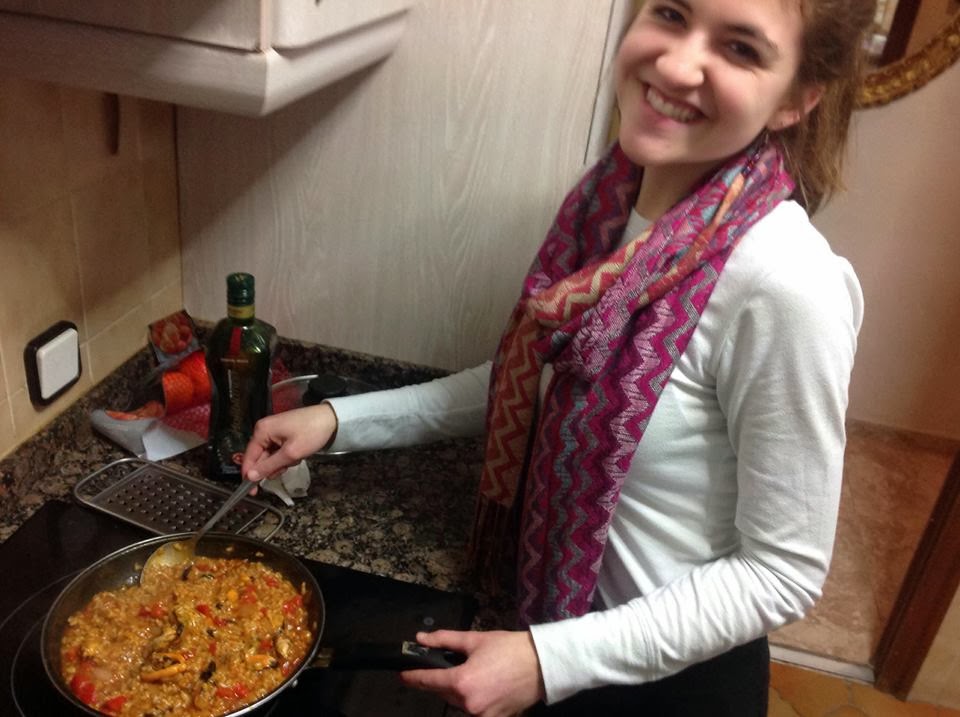 |
| Trying out paella |
Paella: A scrumptious stew made of rice, meat, and/or vegetables. On a whim one day I picked up a bag of fresh mussels at the market - so fresh, in fact, that the tag said they had been caught a few days before! I had never even seen mussels before, let alone cooked them. But my roommate and I tried our hand at making mussel paella, and it turned out to be delicious!
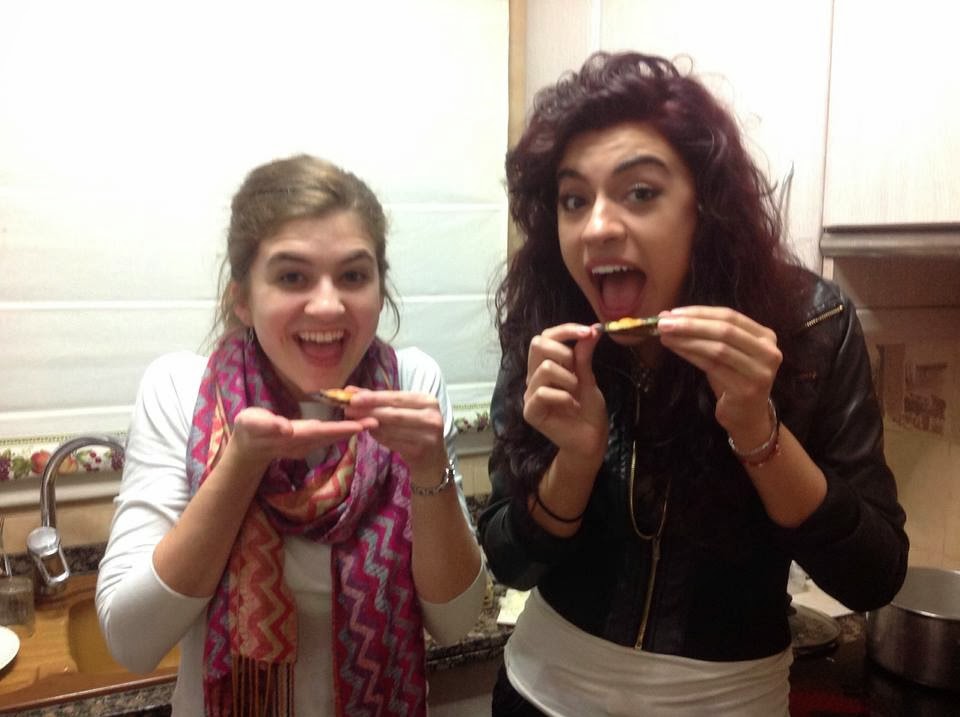 |
| Boiled mussels are tasty on their own, too! |
Valencia, the third-largest city in Spain and capital of Comunidad Valenciana, is famous for its paella - below is a photo of the wonderful paella de pollo (chicken paella) that I ate while on a CEA Excursion to Valencia.
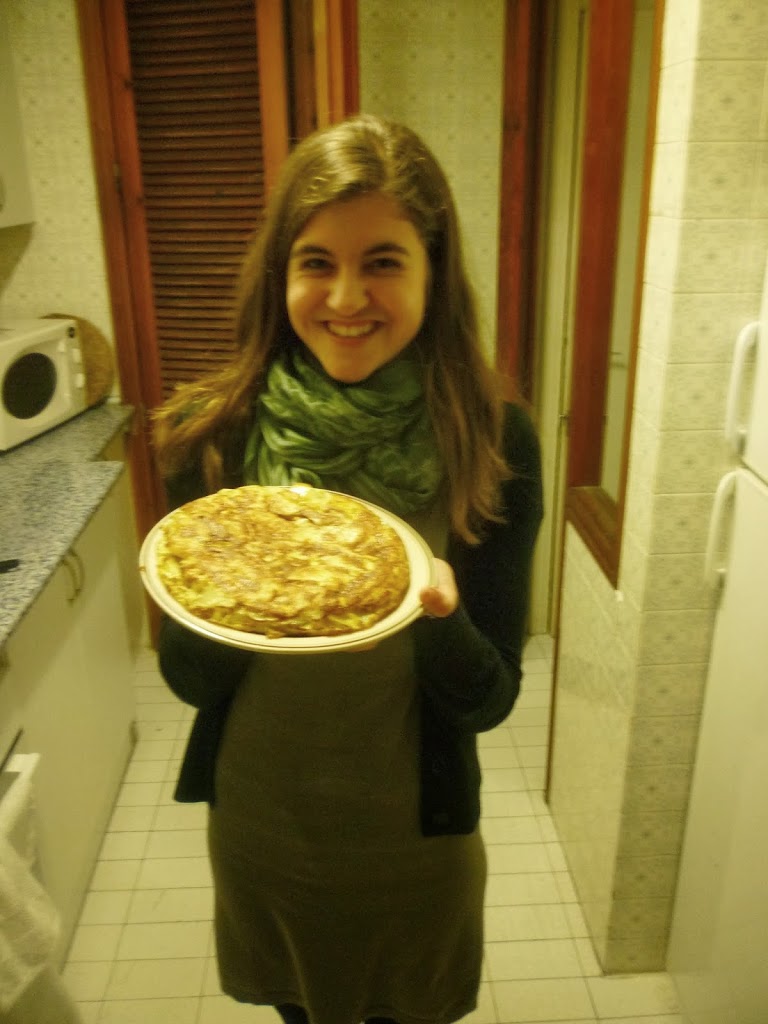
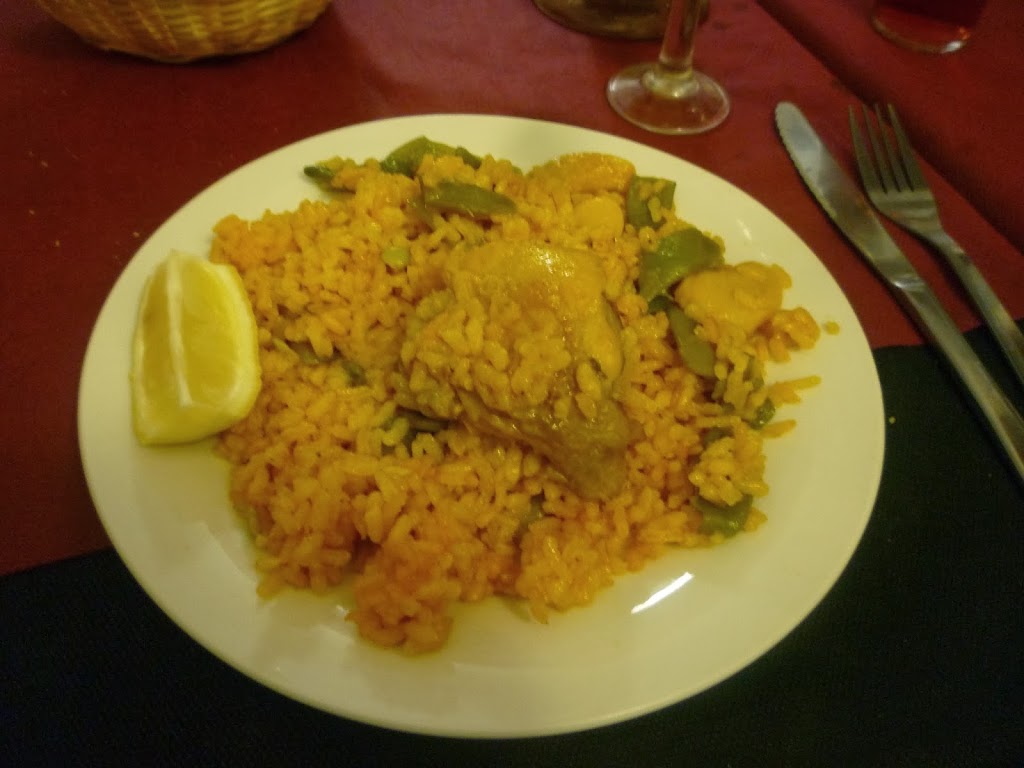 |
| Me with my very own Tortilla de Patata! |
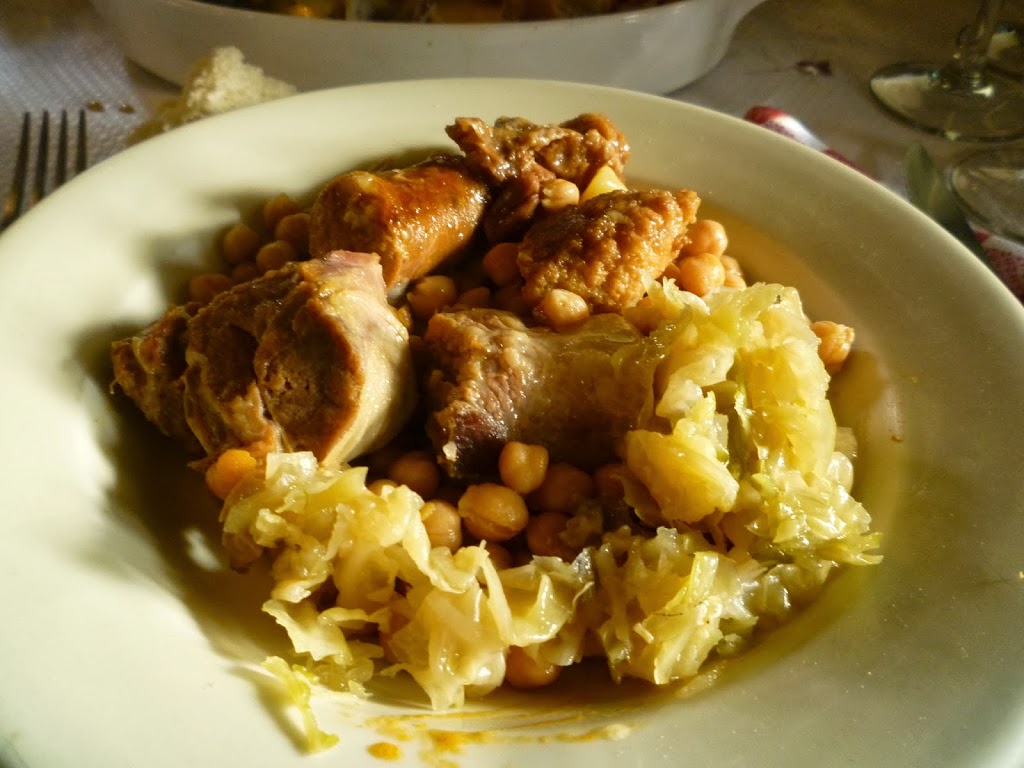 |
| Chuleton con berza (roast with cabbage) |
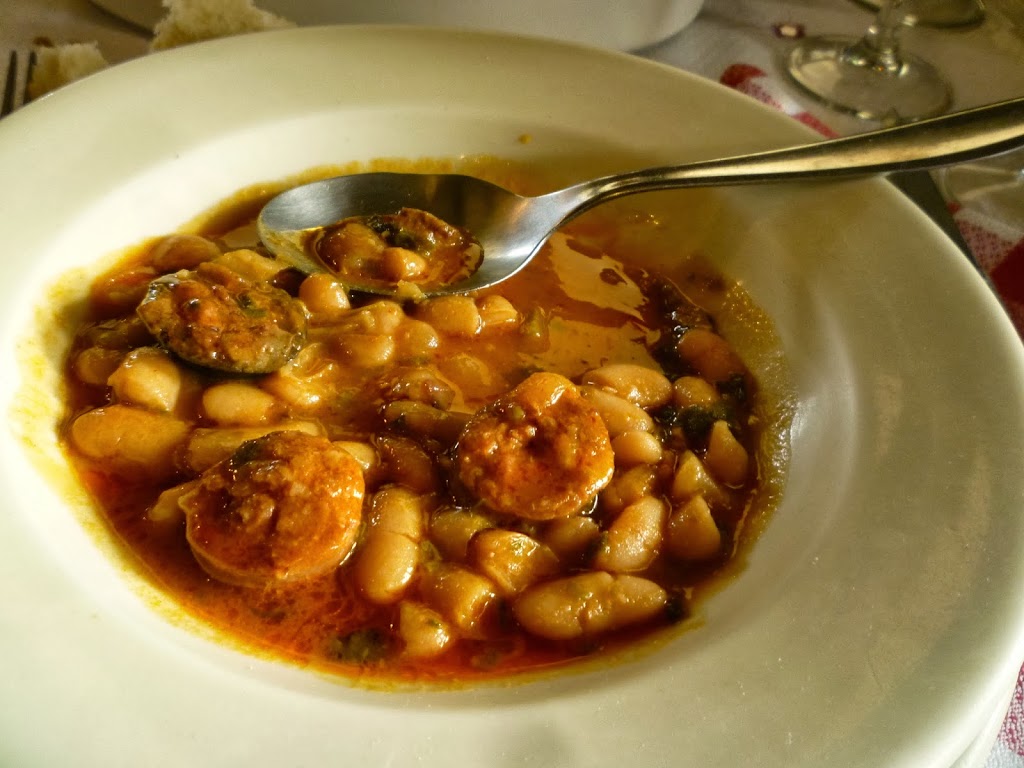 |
| Cocido Lebaniego, a hearty stew with meat and legumes |
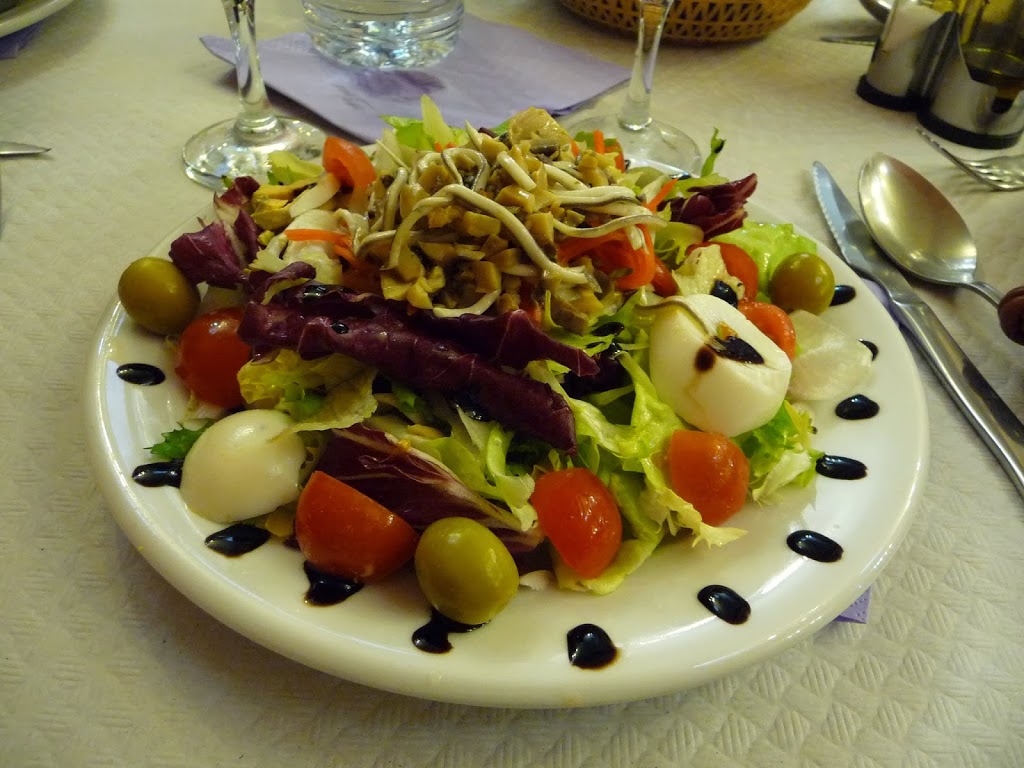 |
| Ensalada con gulas (Salad with tiny sea worms) |
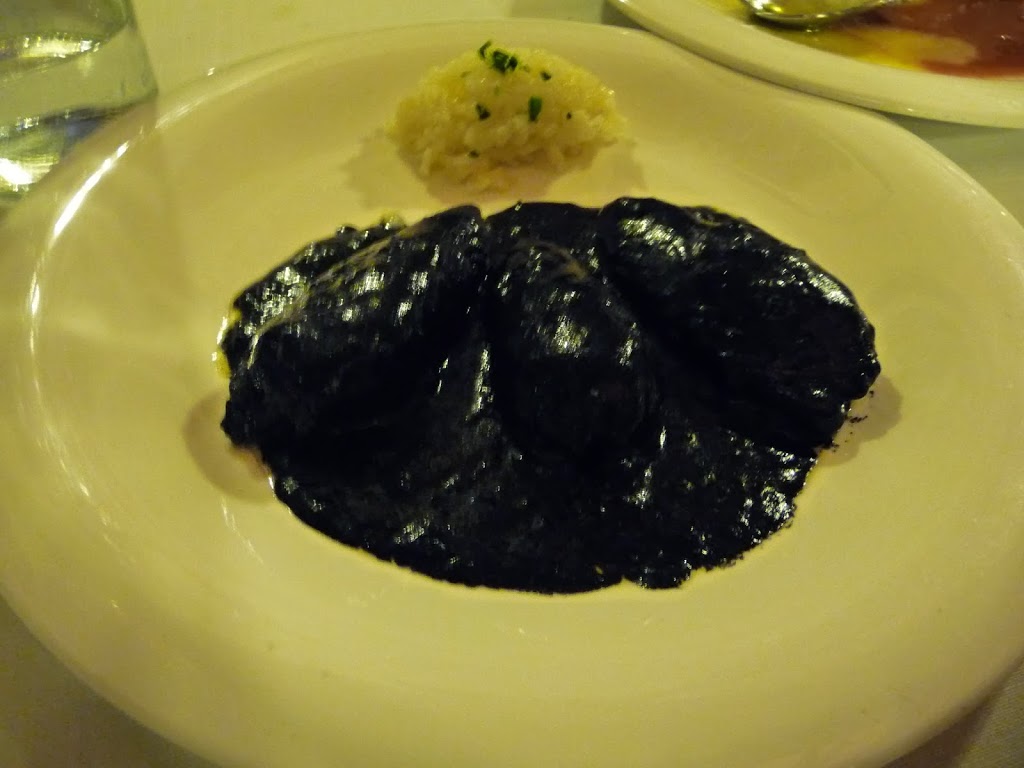 |
| Txipirones en su tinta (Squid in its ink). Trust me, it's good |
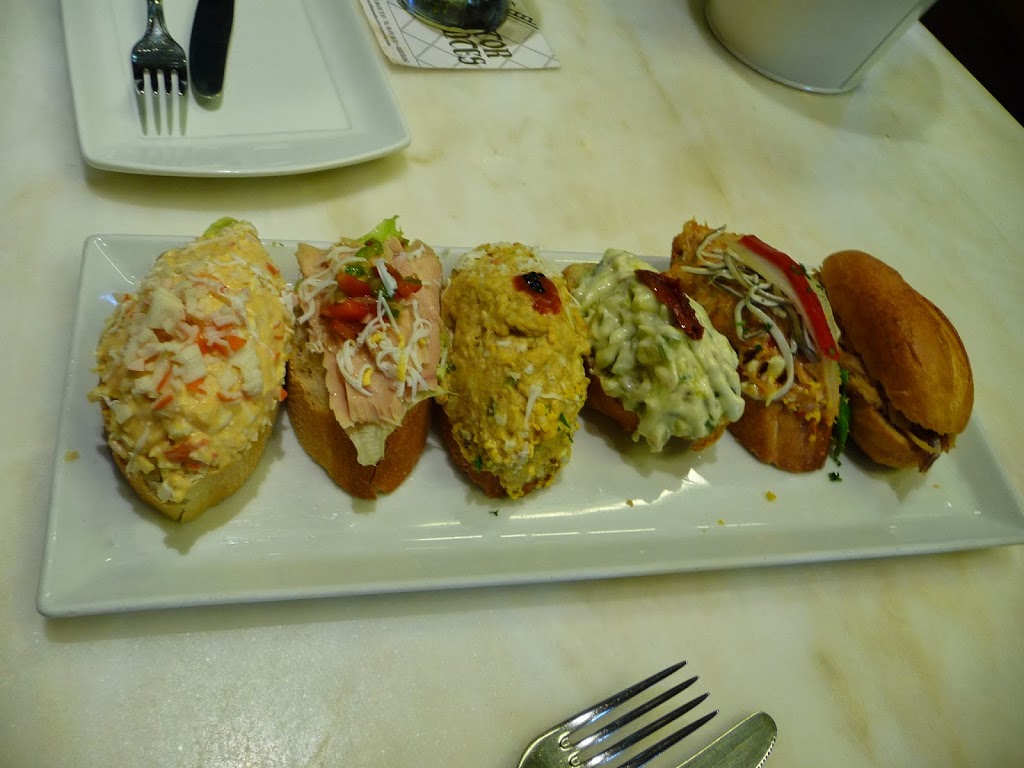 |
| Pinchos |
Above: Pinchos are the northern variation on Spanish tapas, or snack-sized portions of food. Whereas generally tapas are brought to your table on a tray, pinchos are laid out on the bar and you pick what you want with a toothpick.
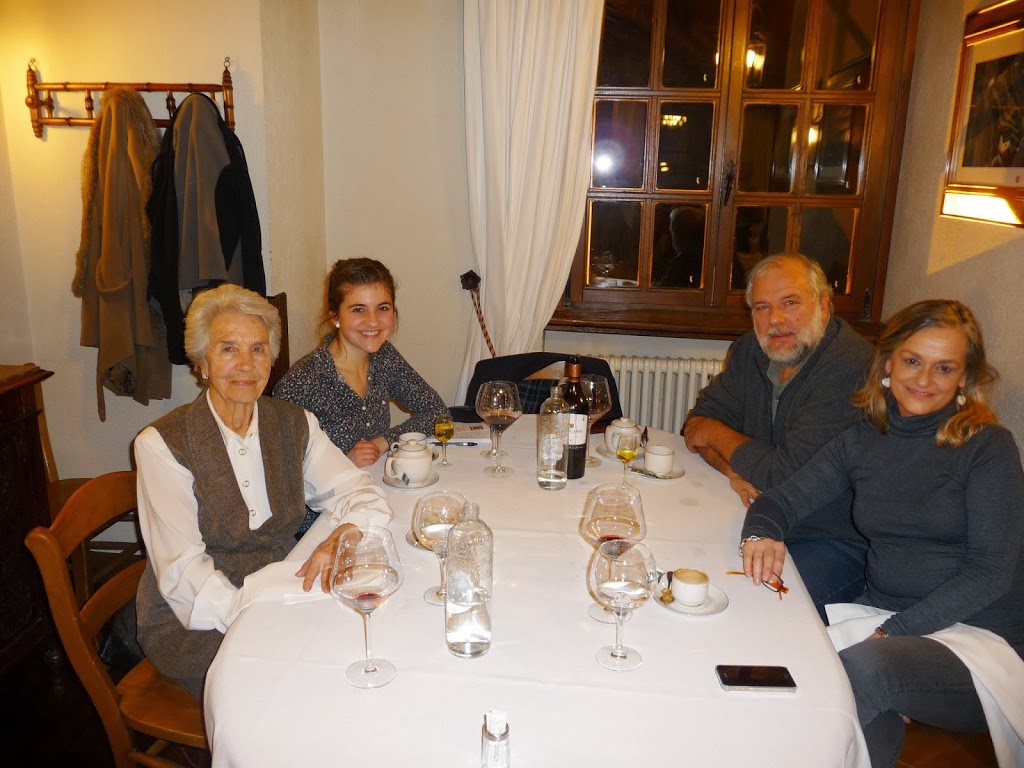 |
| Sharing a meal is sharing a bond |
Above: sharing supper with the Blancos, the wonderful family who hosted me during my visit to Bilbao in Pais Vasco. Our leisurely dinner lasted all evening and involved salad, bread, wine, appetizers, two plates of fish, the txipirones shown above, two kinds of cake, and a hot cup of tea to finish it off. Above all, eating meals is a time to spend together in conversation and building relationships.
Hillary Harder is the Spring 2014 CEA MOJO in Alicante, Spain. She is currently a junior at Goshen College.










